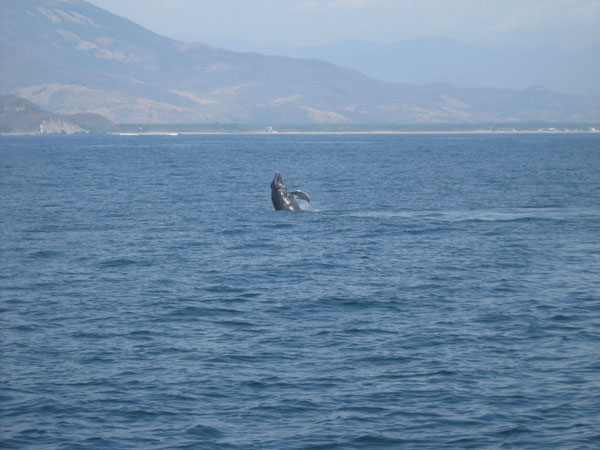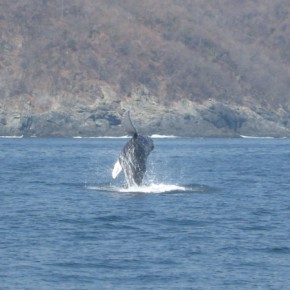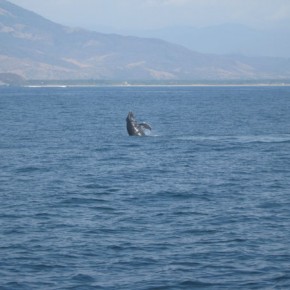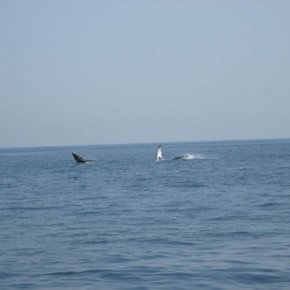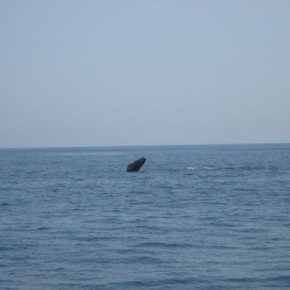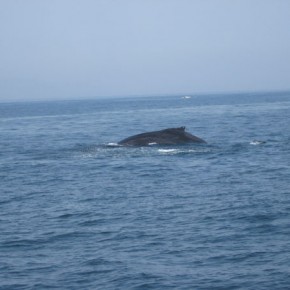While visiting or living in Zihuatanejo, there are many reasons to go fishing, snorkeling or diving in the waters that surround Zihuatanejo-Ixtapa…
During the months of November through April, you might just see one of nature’s largest mammals swimming along with you. If you frequent or have an ocean view of your own on Playa Larga, Playa Blanca or Barra de Potosi, you might catch a pod of whales frolicking in the waters just off shore.
Each winter, more than 10,000 Humpbacks and California gray whales travel around 5,000 miles (the longest migration route of any mammal) from Alaska to Mexico’s Pacific coast where their calves are born. Here, the mothers teach their young to dive and to feed in the warm water. The calves grow protective layers of blubber for their return migration to Arctic waters. Although the whales start their migration in November, the peak time to see the marine giants is January through late March or early April, after the calves are born and they are just off shore. Lucky boaters and beach goers often spot them breaching with thunderous splashes or poking their heads out of the water and turning slowly around to take a look, called “spy hopping.”
So if you are planning a trip out on the water in the next couple of weeks, keep your eyes on the water and hopefully you will catch a glimpse of these incredible creatures before they head back up north to the Artic waters of Alaska.
- Baby Humpback whale breaching. Photo by Skip Cameron.
- Baby Humpback whale taking a leap in front of Playa Larga. Photo by Skip Cameron.
- Baby and Mama Humpback whales playing just off Playa Larga. Photo by Skip Cameron.
- Baby Humpback whale “Spy Hopping”…checking us out. Photo by Skip Cameron.
- Mama Humpback whale herding her calves. Photo by Skip Cameron.

